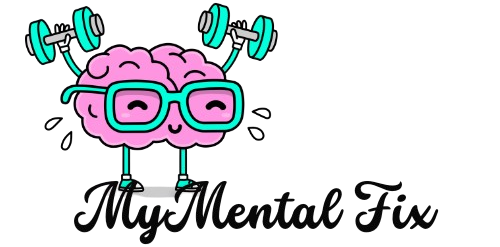Table of Contents
Importance of Work-Life Balance for Health and Happiness.
Ever feel like work is drowning you, leaving no time to breathe? The need for work-life balance is more urgent than ever. I’ve been there, and I know how crucial it is to find a balance that goes beyond just managing time.
Today’s professionals face a big challenge. They’re trying to balance work and personal life, but it’s tough. It’s not just about working less. It’s about building a life that supports both your career and your well-being.
Work-life balance is more than a buzzword. It’s a way of living that affects your mental and physical health. You should have a life where work enhances your dreams, not takes them over.
This guide will show you how to take back control. We’ll explore what balance really means and how to create harmony between work and life. Your path to a more fulfilling life begins here.
Define Work-Life Balance: A Modern Perspective
The meaning of work-life balance has changed a lot in recent years. It’s not just about splitting time evenly between work and personal life anymore. Today, it’s about blending career and personal well-being in a holistic way.
Now, people see balance as creating harmony between different areas of life. What balance means to you depends on your life, career stage, and what’s important to you.
“Balance is not something you find, it’s something you create.” – Unknown
Let’s look at what modern work-life balance is all about:
- Flexibility in work arrangements
- Prioritizing personal wellness
- Embracing individual definition of balance
- Integrating technology thoughtfully
Here are the key parts of work-life balance:
| Dimension | Key Elements |
|---|---|
| Professional | Productivity, career growth, job satisfaction |
| Personal | Mental health, relationships, personal development |
| Integration | Seamless transitions, boundary management |
Your work-life balance is a personal journey. It needs ongoing reflection, adjustments, and choices that match your values and goals.
The Evolution of Work-Life Balance in American Culture
The way we work in America has changed a lot in recent years. Now, we focus more on work-life balance. This means finding ways to make work and personal life work together better.
Looking back, the workplace has changed a lot. It used to be all about strict 9-to-5 hours with little room for personal time.
Traditional Work Models vs. Contemporary Approaches
Back then, work and personal life were hard to balance. People often had to give up their free time for work. Now, the workplace is all about giving employees the freedom to work in ways that suit them best.
- Flexible working hours
- Remote work options
- Emphasis on mental health
- Customized work arrangements
Impact of Technology on Balance
Technology has changed how we think about work. Smartphones and cloud technologies let us mix work and personal life in new ways.
“Technology has transformed work from a place you go to something you do.” – Ginni Rometty, Former IBM CEO
Changing Workplace Expectations
Today, people want more than just a job. They want a work environment that supports their well-being. This includes wellness programs, mental health support, and chances for personal growth.
- Increased focus on employee satisfaction
- Recognition of individual work styles
- Prioritizing personal growth alongside career advancement
Key Components of a Healthy Work-Life Integration

Achieving work-life balance is not about dividing your time perfectly. It’s about finding harmony between work and personal life. To live a balanced life, start by understanding the key elements that make it fulfilling.
Here are the essential parts of work-life integration:
- Career Alignment: Make sure your job aligns with your values and goals
- Personal Health: Focus on your physical and mental well-being
- Relationship Management: Build strong connections with loved ones
- Personal Growth: Spend time on learning and self-improvement
“Balance is not something you find, it’s something you create” – Unknown
To achieve work-life balance, you need to prioritize. First, check how you’re spending your time. See where you’re lacking or overdoing it. Then, create a plan that fits your life and changes as needed.
Your plan should include:
- Setting clear boundaries
- Regular self-checks
- Smart time management
- Continuous learning and growth
Work-life balance is a journey, not a static state. What works today might change tomorrow. Be flexible, kind to yourself, and focus on your overall well-being.
Physical and Mental Health Benefits of Balance
Achieving work-life balance is more than a trend. It’s key to keeping you healthy and happy. It goes beyond just managing time, touching on your physical and mental health.
By focusing on balance, you gain big health benefits. Stress, once a huge problem, becomes easier to handle.
Stress Reduction and Prevention
Too much stress harms your body and mind. Work-life balance helps by reducing stress through:
- Lower cortisol levels
- Reduced risk of burnout
- Enhanced emotional resilience
- Improved mental clarity
Enhanced Sleep Quality
A balanced life means better sleep. Without work stress, your body can relax and heal.
“Sleep is the golden chain that binds health and our bodies together.” – Thomas Dekker
Improved Overall Wellness
Mixing work and personal life boosts your health. The benefits of balance include:
- Stronger immune system
- Higher energy levels
- Better cardiovascular health
- Increased psychological well-being
Your health is your most valuable asset—protect it through intentional balance.
Common Barriers to Achieving Work-Life Balance
Work-life balance is not easy to achieve. Many people face invisible barriers that stop them from balancing work and personal life. Knowing these barriers is the first step to overcoming them.
- Overwork Culture: Modern workplaces often value long hours and being always available
- Technology Addiction: Being always connected to digital devices makes it hard to separate work and personal time
- Perfectionism: Setting too high standards can lead to burnout and lower productivity
“The key is not to prioritize what’s on your schedule, but to schedule your priorities.” – Stephen Covey
Life stages bring different challenges to work-life balance. New professionals might feel the need to prove themselves. Parents have to juggle work and family. Caregivers face even more challenges in setting boundaries.
Societal expectations add to these challenges. Many workers feel guilty about setting boundaries or focusing on personal wellness. Recognizing these psychological barriers is key to finding balance.
Success in achieving work-life balance comes from self-awareness, planning, and setting clear boundaries. By tackling these common obstacles, you can lead a more fulfilling and sustainable life.
Strategic Approaches to Time Management
Mastering time management is key for a better work life balance. Knowing how to prioritize and manage your time can boost your productivity at work and home.

Good time management is more than just scheduling. It’s about understanding how you spend your time and finding ways to do better.
Priority Setting Techniques
Top professionals use certain methods to manage their tasks:
- Eisenhower Matrix: Sort tasks by urgency and importance
- ABC Method: Prioritize tasks from most critical to least
- 80/20 Rule: Focus on tasks that have the biggest impact
Effective Scheduling Methods
“Time is a created thing. To say ‘I don’t have time’ is like saying, ‘I don’t want to.'” – Lao Tzu
Use scheduling methods to boost your productivity:
- Time-blocking: Set specific hours for focused work
- Pomodoro Technique: Work in 25-minute focused intervals
- Energy management: Do complex tasks when you’re most alert
Digital Tools for Time Management
Use technology to improve your time management. Digital tools can help you track and analyze your daily activities, making it easier to balance work and life.
- Trello: Visual project management
- RescueTime: Automatic time-tracking software
- Todoist: Advanced task management
Setting Boundaries Between Professional and Personal Life
It’s key to draw a clear line between work and personal life for a good work-life balance. Today, it’s easy for work and personal time to mix, so setting strong boundaries is vital.
“Boundaries are a form of self-care. They define where you end and others begin.” – Amy Morin
To achieve a better work-life balance, you need to make a plan. Start by setting clear rules for your work and personal life:
- Create a dedicated workspace that can be physically closed off after work hours
- Set definitive work start and end times
- Communicate your availability clearly to colleagues and clients
- Develop a consistent end-of-day shutdown ritual
Digital disconnection is crucial for healthy boundaries. Here are some ways to stay connected digitally:
| Digital Boundary Strategy | Implementation Method |
|---|---|
| Email Management | Set automatic replies during non-work hours |
| Communication Apps | Use separate work and personal messaging platforms |
| Notification Control | Silence work notifications after designated hours |
Work-life balance tips vary for everyone. It’s important to check and change your boundaries as your life changes. Being flexible and clear in communication helps keep a balance that lasts.
The Role of Employers in Supporting Work-Life Balance
Employers are key in making a workplace that supports work-life balance. Today’s companies see how well-being at work boosts productivity and job happiness. This also helps the company succeed.
Good work life balance examples show how employers can change the workplace. They can make a big difference in how employees feel and work.
Flexible Work Arrangements
Companies are changing old work ways with new flexibility plans:
- Remote work options
- Flexible scheduling
- Compressed workweeks
- Part-time and job-sharing opportunities
Company Policies and Benefits
| Policy Type | Employee Impact |
|---|---|
| Unlimited Paid Time Off | More control over personal time |
| Parental Leave | Helps with family life |
| Mental Health Programs | Supports overall health |
Creating a Supportive Culture
To really value work-life balance, it’s not just about policies. It’s about changing the whole culture. Authentic leadership is key. Leaders should show they value work-life balance and care about their team’s well-being.
“Our employees are our greatest asset. Their balance determines our collective success.” – Satya Nadella, Microsoft CEO
By focusing on work life balance and support, employers can make a workplace where people do well in both their personal and professional lives.
Measuring and Assessing Your Work-Life Balance
To understand your work life balance, you need to evaluate yourself. Keep track of your personal and work life. This helps you see where you can improve and make changes.
- Time tracking journals
- Stress level inventories
- Personal satisfaction surveys
- Energy management assessments
Your work life balance changes as you go through life. Regular checks help you see how balanced you are and what changes you might need.
“Balance is not something you find, it’s something you create” – Unknown
Here’s a detailed framework to check your work-life balance:
| Assessment Category | Evaluation Metrics | Scoring Range |
|---|---|---|
| Professional Satisfaction | Job engagement | 1-10 scale |
| Personal Well-being | Stress levels | Low-Medium-High |
| Time Management | Hours dedicated to work/personal life | Percentage allocation |
Remember, assessing work-life balance is an ongoing process that requires honest self-reflection and willingness to adapt.
Building Sustainable Work-Life Balance Habits
Creating lasting work-life balance takes dedication and practice. By focusing on sustainable habits, you can better manage your work and personal life.
Work-life balance isn’t about being perfect. It’s about finding realistic ways to support your well-being.
Daily Practice Techniques
- Start your day with a 10-minute mindfulness meditation
- Block personal time in your calendar with the same importance as work meetings
- Practice the two-minute rule for quick personal tasks
- Set clear technology boundaries during personal hours
Long-Term Strategy Development
Your work-life balance strategies should grow with you. Create a quarterly plan that links your career and life goals.
“Balance is not something you find, it’s something you create” – Unknown
Adjustment and Adaptation Methods
- Conduct monthly self-assessments of your current balance
- Be flexible and willing to modify your approach
- Communicate your needs with employers and family
- Learn from setbacks without becoming discouraged
Remember, achieving sustainable work-life balance is a journey. It’s about self-discovery and living intentionally.
Conclusion
Your journey to work-life balance is a big change that needs commitment and planning. It’s not just about managing time. It’s about building a life that supports both your career and personal happiness. By using the tips from this article, you can make your life more meaningful and fulfilling.
Work-life balance is a journey, not a fixed point. Every step you take helps improve your life. The methods we talked about, like setting boundaries and using technology wisely, can help you make lasting changes.
Choosing to balance work and life can have big benefits. It lowers stress, boosts your health, and makes you more productive. By focusing on your well-being, you’re investing in a better, more exciting future.
Begin by picking one strategy that feels right to you. Start adding it to your daily life slowly. Finding balance is a personal and ongoing process. Be patient, kind to yourself, and keep your vision of a balanced life in mind.

